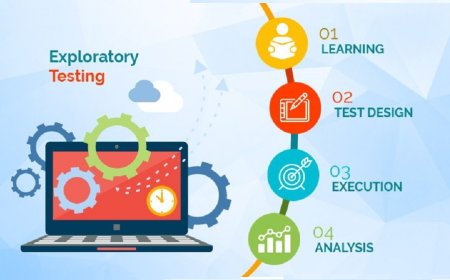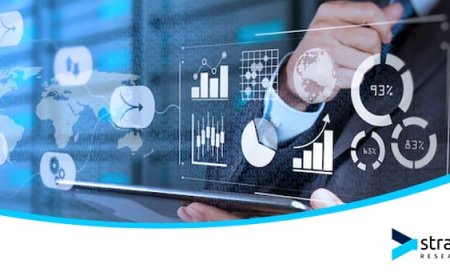Business Intelligence (BI) Retail Solutions: Driving Smarter Retail Decisions
However, the ability to extract meaningful insights from this data is what separates successful retailers from the rest. This is where Business Intelligence (BI) retail solutions come into play.
BI solutions empower retail businesses to make data-driven decisions, optimize operations, enhance customer experience, and increase profitability. From real-time dashboards to predictive analytics, BI tools are revolutionizing how retailers manage their operations and engage with customers.
What Are BI Retail Solutions?
Business Intelligence retail solutions are technologies, platforms, and processes that help retailers collect, process, analyze, and visualize business data. These solutions transform raw data into actionable insights, enabling better strategic and tactical decisions across the retail value chain.
They typically include features like:
-
Data warehousing
-
Reporting tools
-
Dashboards and visualization
-
Predictive analytics
-
AI and machine learning models
-
KPI monitoring
BI tools are integrated with POS systems, ERP software, CRM platforms, and e-commerce applications to provide a unified view of retail performance.
Key Components of BI in Retail
1. Data Integration
Retailers deal with data from multiple sourcesphysical stores, online platforms, suppliers, warehouses, and customer touchpoints. BI solutions integrate all this data into a centralized repository, eliminating silos and enabling comprehensive analysis.
2. Data Warehousing
Data is stored in structured formats in a data warehouse, allowing easy querying, historical analysis, and reporting.
3. Dashboards and Reporting
Interactive dashboards and automated reports provide retailers with real-time insights on key metrics such as sales trends, customer behavior, inventory turnover, and revenue performance.
4. Predictive Analytics
By leveraging AI and machine learning, BI systems can forecast future trendssuch as demand forecasting, customer churn prediction, and seasonal buying patterns.
5. Self-Service BI
Modern BI platforms enable non-technical users (like store managers or marketing teams) to create custom reports and analyze data without needing IT support.
Applications of BI Solutions in Retail
1. Sales Analysis
BI tools analyze daily, weekly, and seasonal sales patterns to identify high-performing products, peak buying times, and regional sales differences. Retailers can adjust pricing, promotions, and product placement based on this data.
2. Customer Insights
Understanding customer preferences, purchase history, and demographics helps create personalized marketing strategies, improve customer loyalty programs, and enhance customer service.
3. Inventory Optimization
BI solutions track inventory movement across all stores and warehouses. Retailers can avoid stockouts and overstocking by optimizing reorder points and inventory turnover rates.
4. Supply Chain Management
From order tracking to supplier performance analysis, BI tools provide full visibility into the supply chain, helping reduce lead times, control costs, and ensure timely product delivery.
5. Marketing Effectiveness
Measure the ROI of marketing campaigns, analyze which channels perform best, and adjust budgets and strategies accordingly.
6. Store Performance Monitoring
BI dashboards enable multi-store retailers to compare store performance, employee productivity, customer footfall, and other metrics to identify areas for improvement.
7. Price and Promotion Optimization
Analyze competitor pricing, customer response to discounts, and historical promotional data to determine the most effective pricing and promotional strategies.
Benefits of BI Retail Solutions
1. Data-Driven Decision Making
With BI tools, decisions are no longer based on guesswork. Retailers can back their strategies with real-time and historical data.
2. Improved Operational Efficiency
Automation of reporting and analysis reduces manual work and helps teams focus on core business areas.
3. Enhanced Customer Experience
By understanding customer preferences and behaviors, retailers can personalize interactions, promotions, and loyalty programs.
4. Increased Sales and Profitability
Better insights into product performance, pricing, and marketing lead to improved sales strategies and higher profit margins.
5. Faster Response to Market Trends
Retailers can quickly identify changing consumer trends, supply chain issues, or competitive threats and respond proactively.
Challenges in Implementing BI in Retail
1. Data Quality and Consistency
BI systems are only as good as the data they process. Inaccurate or inconsistent data can lead to misleading insights.
2. Integration Complexity
Integrating multiple data sources, especially in legacy systems, can be time-consuming and technically complex.
3. High Implementation Cost
Initial investment in BI tools, infrastructure, and training can be significant, especially for small to mid-sized retailers.
4. User Adoption
Employees may be resistant to change or may not have the skills to use BI tools effectively. Training and change management are crucial.
5. Data Security
With vast amounts of customer and operational data being processed, ensuring data privacy and security is critical.
Future Trends in BI Retail Solutions
1. AI and Machine Learning
More retailers will adopt AI-powered BI tools to uncover deeper patterns, automate decision-making, and provide hyper-personalized customer experiences.
2. Mobile BI
BI solutions accessible through mobile apps will empower field managers and store staff to make decisions on the go.
3. Natural Language Processing (NLP)
NLP will allow users to interact with BI platforms using voice or plain English, democratizing data analysis.
4. Augmented Analytics
Augmented analytics uses AI to automatically suggest insights, detect anomalies, and recommend actionstaking BI to the next level.
5. Real-Time Analytics
Real-time BI dashboards will become the norm, allowing instant decisions based on live data feeds from stores, warehouses, and customer interactions.
Conclusion
BI retail solutions are reshaping the retail industry, providing unprecedented visibility into operations, customers, and market trends. By leveraging these insights, retailers can improve agility, make smarter decisions, and stay ahead of the competition.
As retail continues to evolvedriven by e-commerce growth, omnichannel strategies, and shifting customer expectationsBusiness Intelligence will be a key enabler of success. Investing in the right BI tools and strategies today can prepare retailers for the dynamic challenges of tomorrow.




























